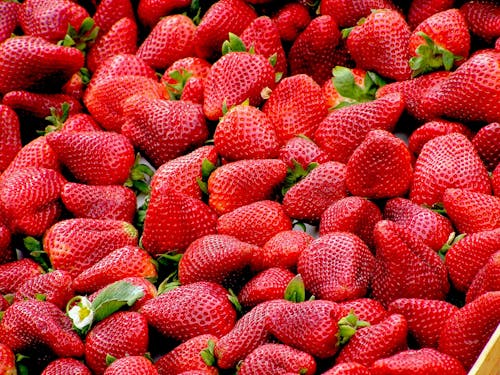It’s strawberry time—one of my favorite seasons of the year. I look forward to May and celebrating “National Strawberry Month” when those luscious red fruits abound.
I grew up on a farm where my Dad grew acres of berries. In my younger years, “picking time” filled my days with unending excitement. Help came from nearby towns along with friends and neighbors to glean the fields. Not unlike the biblical story of Ruth, at the end of the season, Dad welcomed anyone into the fields to gather the last remnants of the season and whatever pickers may have missed.

Today, I maintain a “wild” strawberry patch in my garden. Unlike the tended rows in my Dad’s fields, my berries are on their own and surprise me with a plentiful supply of fresh berries for about three weeks with enough yield for several jars of jam. Our expanding family of grandchildren and greats love the home prepared product. It’s become a generational delight. However, we don’t miss enjoying those berries throughout the year. We freeze many for future months. Freezing has no effect on the nutrients in these tasty fruits.
Strawberries provide abundant amounts of vitamin C (ascorbic acid) and are a good source of manganese, potassium, folic acid, and fiber. Along with these nutrients, they are excellent sources of antioxidants which help in lowering risks of several disease conditions.
According to recent studies, strawberries may help slow the aging process of the brain. They are considered one of the most healthful fruits in preventing memory loss. Research confirms that healthy adults who eat strawberries can improve some aspects of cognition. Their high flavonoid content may also contribute to reduction in Alzheimer’s Disease and other forms of dementia.
Strawberries also have positive effects on heart health. Their high levels of antioxidants, known as polyphenols, combined with their many nutrients may improve HDL and lower LDL cholesterol levels. Nutrients also function to decrease oxidative stress and inflammation to improve vascular function. Potassium helps control blood pressure.
The fiber in these berries can improve digestive health. The prebiotics in strawberries may increase gut bacteria and help maintain lean body weight and longevity.
Frequent consumption of strawberries may lower the risk of type 2 diabetes. Strawberries tend to slow glucose digestion which helps to prevent spikes in both glucose and insulin. The American Diabetes Association considers strawberries as one of the major ten superfoods for those with diabetes. They have a low glycemic index with about half the calories found in apples or bananas.
These delicious berries are sodium-free, fat-free, cholesterol-free, and low-calorie. A serving of berries contains less than 50 calories. First cultivated in Rome, they are considered the world’s favorite berry. Regardless of where you reside, don’t miss out on strawberry season and the opportunity to splurge on one of the tastiest and healthiest foods. Why not consider making them a part of your healthy meal plan?





